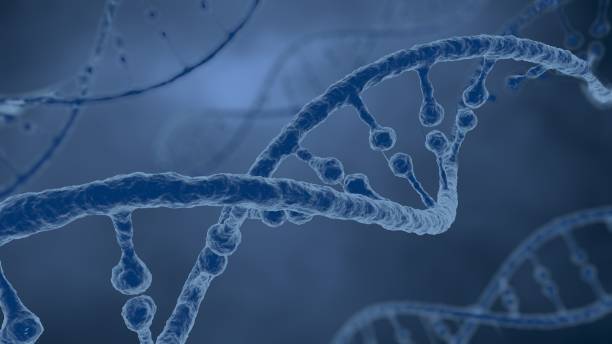The appearance of single-cell genomic technology has revolutionized our potential to take a look at the genetic and genomic landscapes of character cells with unheard-of resolution and elements. One of the key demanding situations in studying single-cellular genomic statistics is the inference of haplotypes, the particular combinations of alleles on a single chromosome, which is important for expertise in genetic variants, heritability, and the useful results of genetic versions. Haplotype inference from single-cell genomic facts gives specific computational and statistical demanding situations, but it additionally holds super promise for unraveling the complexities of genetic range, evolution, and disorder.
Single-Cell Genomic Records: A Window into Cellular Diversity
Single-cell genomic technology, including single-cellular RNA sequencing (scRNA-seq) and single-cell DNA sequencing (scDNA-seq), allows the profiling of the genetic and genomic functions of individual cells, permitting researchers to find the heterogeneity and complexity of cell populations. Via taking pictures of the molecular signatures of male or woman cells, those technologies provide insights into cell types, states, and capabilities, in addition to the genetic and epigenetic mechanisms that underlie cell variety and plasticity.
Within the context of the genetic version, single-cell genomic statistics provide a unique opportunity to study haplotypes at the level of male or woman cells, shedding mild at the allelic mixtures and genetic interactions that force cellular phenotypes and traits. However, the evaluation of haplotypes from single-cell genomic data is complicated by numerous elements, inclusive of the sparse and noisy nature of single-cell facts, the presence of technical artifacts and biases, and the want to distinguish authentic genetic versions from sequencing errors and somatic mutations.
Challenges in Haplotype Inference from Single-Cell Genomic Statistics
Haplotype inference from single-cellular genomic facts poses numerous computational and statistical challenges that stem from the specific traits of single-cell records and the complexities of haplotype phasing. some of the key challenges consist of:
Allelic Dropout:
In single-cellular genomic statistics, the amplification and sequencing of genetic fabric from character cells can bring about allelic dropout, wherein one of the alleles at a given locus isn’t always detected, leading to incomplete or biased data about haplotypes.
Phasing Ambiguity:
The sparse and noisy nature of single-cellular facts could make it tough to unambiguously section alleles and decide their parental origin, especially in regions with low coverage or excessive allelic complexity.
Somatic Mosaicism:
Single-cell genomic statistics can screen somatic mutations and mosaicism, where cells within the identical person harbor different genetic variations, complicating the inference of haplotypes and their transmission patterns.
Computational Complexity:
Haplotype inference from single-cell genomic information calls for computationally in-depth algorithms and statistical fashions to integrate information throughout cells, account for technical artifacts, and resolve phasing ambiguities.
Tactics to Haplotype Inference from Single-Cell Genomic Information
No matter these challenges, numerous techniques have been evolved to deduce haplotypes from single-cell genomic records, leveraging computational techniques, statistical models, and experimental strategies to enhance the accuracy and reliability of haplotype inference. The number of the key techniques consist of:
Statistical phasing algorithms:
Statistical phasing algorithms, which include those primarily based on hidden Markov models (HMMs) and probabilistic graphical fashions, can integrate records from more than one cell to infer haplotypes, account for allelic dropout, and solve phasing ambiguities.
Experimental barcoding:
Experimental barcoding strategies, consisting of cell indexing of transcriptomes and epitopes through sequencing (CITE-seq) and combinatorial cell indexing (CCI), may be used to label person cells with precise molecular barcodes. It permits the reconstruction of haplotypes by way of linking genetic variations to particular cells.
Integration with bulk sequencing facts:
Integrating single-cell genomic facts with bulk sequencing statistics from identical individuals can provide additional information about haplotypes, allelic frequencies, and phasing, enhancing the accuracy of haplotype inference and validation.
Computational imputation:
Computational imputation techniques, such as the ones based on machine studying and deep learning, can leverage data from reference haplotype panels and population genomics statistics to impute lacking alleles and infer haplotypes in single-cellular information.
Applications of Haplotype Inference from Single-Cell Genomic Statistics
Haplotype inference from single-cell genomic facts has several important applications in genetics, genomics, and biomedical research, together with:
Understanding genetic mosaicism:
Single-cell genomic statistics can reveal somatic mosaicism and genetic heterogeneity within tissues and individuals. It sheds light on the origins and consequences of genetic variants in development, getting old, and sickness.
Unraveling Cell Lineage and Evolution:
Haplotypes inferred from single-cell genomic facts may be used to reconstruct cell lineage timber, infer clonal dynamics, and tune the evolution of genetic variations and haplotypes in normal and diseased tissues.
Analyzing Allele-Particular Gene Expression and Regulation:
Haplotype inference from single-cell genomic facts can allow us to have a look at allele-particular gene expression, chromatin accessibility, and regulatory interactions at the level of individual cells. It also supplies insights into the practical effects of genetic variants and haplotypes.
Identifying disease-related Haplotypes:
Single-cell genomic records may be used to discover disease-related haplotypes, genetic risk factors, and somatic mutations in complex diseases. It permits the discovery of novel healing targets and personalized treatment techniques.
Future directions and challenges
The sector of haplotype inference from single-cellular genomic records is swiftly evolving, driven by advances in experimental technology, computational techniques, and statistical models. However, several challenges and opportunities lie in advance, including:
Improving accuracy and scalability:
developing greater correct and scalable algorithms for haplotype inference from single-cell genomic records, especially in the presence of allelic dropout, phasing ambiguities, and complex genetic versions.
Integrating multi-omics facts:
Integrating single-cell genomic records with different omics statistics, which includes single-cellular epigenomics and spatial transcriptomics, offers a complete view of haplotypes, genetic regulation, and cellular features.
Exploring Scientific Programs:
Translating haplotype inference from single-cell genomic data into scientific applications, along with cancer genomics, prenatal diagnostics, and personalized medication, to enhance diagnosis, prognosis, and remedy.
Ethical and Privacy Concerns:
Addressing ethical and privacy issues related to the usage of single-cellular genomic statistics for haplotype inference, such as knowledgeable consent, records sharing, and protection of touchy statistics.
Conclusion
In the end, haplotype inference from single-cell genomic holds brilliant promise for unraveling the complexities of genetic variation, evolution, and disease to the extent of character cells. No matter the computational and statistically demanding situations, advances in experimental and computational methods are taking the field forward, establishing new possibilities for expertise in cell variety, genetic mosaicism, and disorder mechanisms. As our ability to deduce haplotypes from single-cell genomic statistics continues to improve, we’re poised to gain deeper insights into the genetic and genomic underpinnings of health and disorder, with a long way-accomplishing implications for precision remedy, regenerative biology, and biomedical studies.










